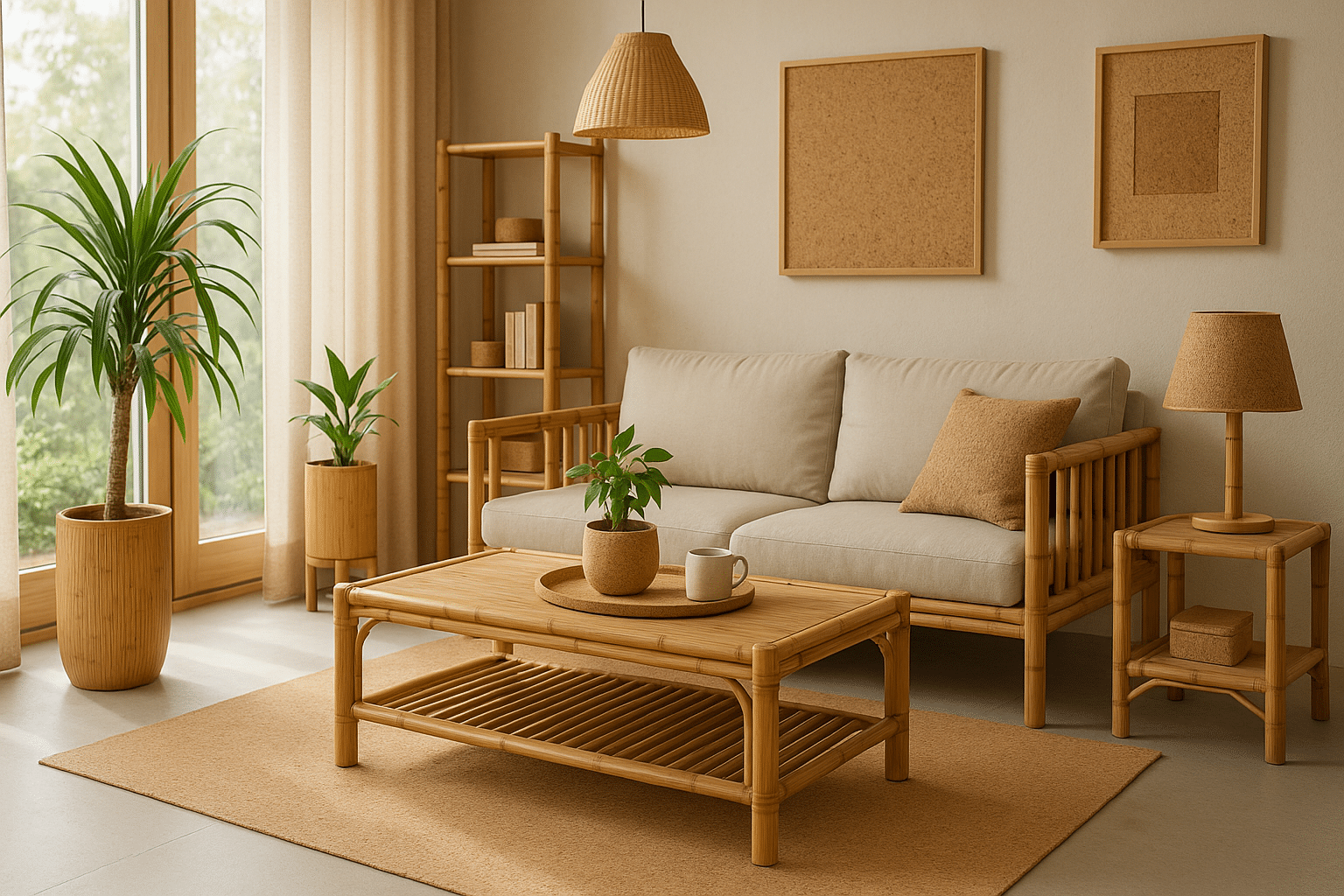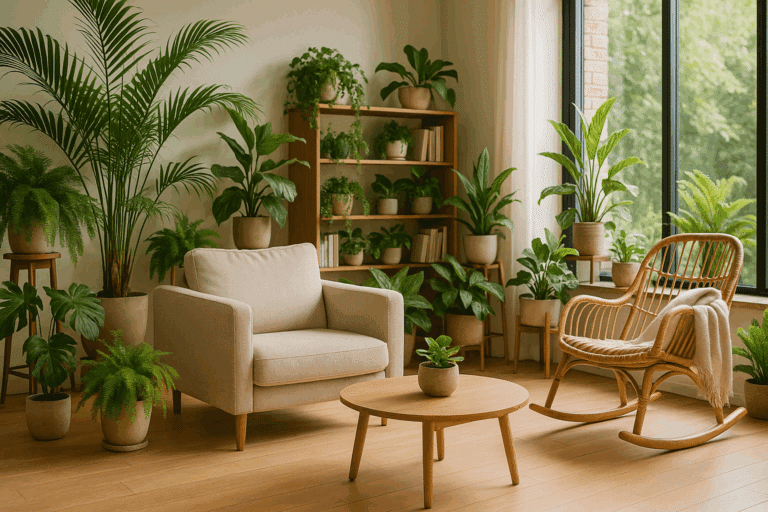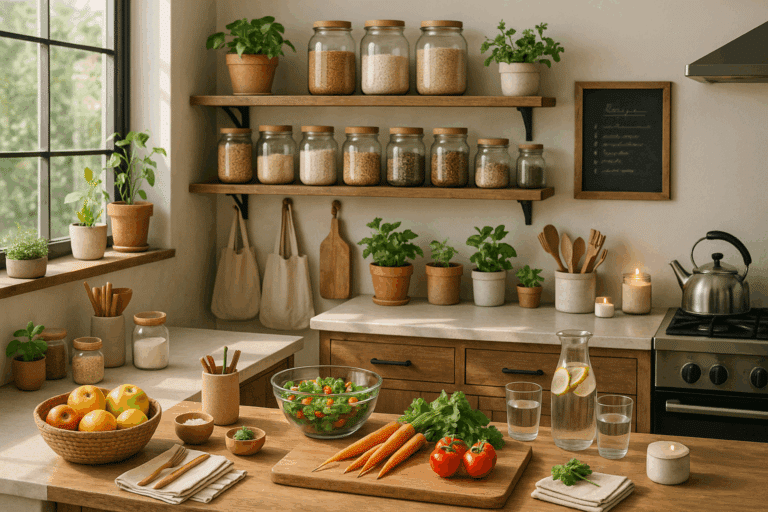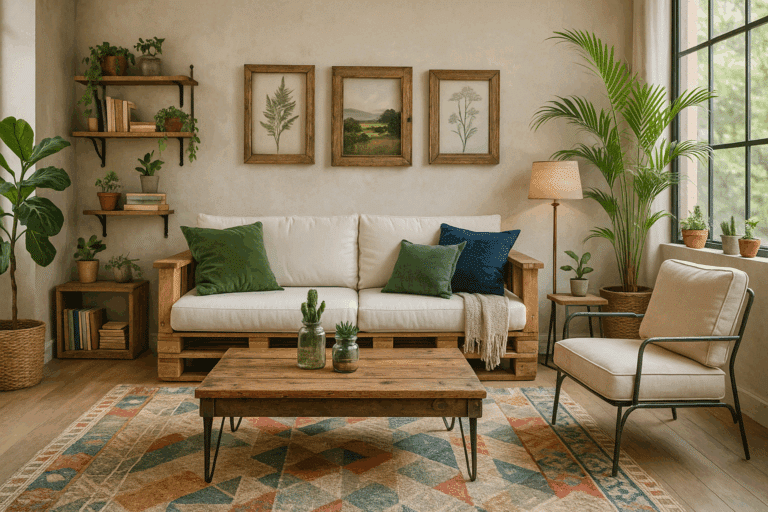Perhaps, solar panels or electric cars? But, would you think about bamboo and cork? 💭 In the midst of the global environmental crisis, these two natural resources are redefining what we know about eco-friendly materials. They are not only durable, versatile, and renewable, but also carry a minimal environmental footprint, offering an excellent alternative to more traditional, environmentally-damaging materials.
Whether you’re a sustainability enthusiast, an eco-designer, or simply someone curious about the world of green living, this comprehensive article is sure to spark your interest. 🌱 We’ll delve into the ins and outs of these fascinating materials – their properties, benefits, applications, and the role they play in paving the way towards a more sustainable future.
Many might underestimate the power of these two humble materials. However, when we take a closer look at bamboo and cork, we find features and benefits that make them exceptional resources for eco-friendly living and innovation. 🎋🌳
What makes Bamboo and Cork stand out?
Picture this: a material that can grow up to 1 meter per day, absorbs carbon dioxide at a high rate, and is so resilient it can be used for everything from building homes to making fabric. Enter, bamboo. On the other side, imagine a material that can regenerate itself, provides an excellent insulation, is impermeable to liquids and gases, and creates a habitat for numerous species. That’s cork for you.
The use of bamboo and cork is no novelty; they have been utilized by various cultures across the globe for centuries. Yet, their potential in modern sustainable living and green technologies is just beginning to be tapped into.
Exploring the applications
We’ll also explore the myriad of ways bamboo and cork can be used – from construction and furniture to fashion and everyday products. They are transforming industries traditionally dominated by less sustainable materials, and their versatility continues to break new ground. 🏗️👚
Overcoming the challenges
Of course, like any solution, bamboo and cork also come with their own set of challenges. We’ll unpack these issues, from cultivation to manufacturing processes, and discuss how they can be mitigated to maximize their sustainability potential. 💡
So, buckle up and join us on this deep dive into the world of bamboo and cork. In this article, you’ll not only learn about these materials but also understand how they can contribute to a more sustainable lifestyle. Let’s step forward into the future, where the power of nature and innovation converge to make our lives greener and our planet healthier. 🌎
Discovering the Eco-Friendly Power of Bamboo and Cork
When we talk about sustainable living, two materials that frequently come to mind are bamboo and cork. These natural materials have risen to popularity due to their eco-friendly characteristics and versatility in various applications. From the construction industry to product design, bamboo and cork are leading the way towards a more sustainable future.
But what exactly makes these materials so unique? And how are they contributing to eco-friendly innovations? Let’s dive deeper into the world of bamboo and cork to uncover their potentials.
Before we proceed, I highly recommend watching this informative video: “Sustainable Materials: Bamboo and Cork” from the YouTube channel ‘Material Science’ to gain a visual understanding of these materials. The video provides a clear, detailed introduction to the topic, emphasizing their benefits and roles in sustainable development.
The Power of Bamboo: A Sustainable Super-Material
Bamboo, often referred to as the ‘green steel’ of the 21st century, has captured the attention of scientists, engineers, and environmentalists alike. What makes bamboo stand out is its rapid growth and regenerative capacity. A bamboo plant can grow up to a meter in a day and mature in just four years, making it a highly renewable resource.
Another advantage of bamboo is its structural strength. Bamboo has a higher specific compressive strength than wood, brick, or concrete and a specific tensile strength that rivals steel. These properties make bamboo an ideal material for various applications, from construction to the manufacture of everyday objects.
But the benefits of bamboo extend beyond its physical properties. Bamboo cultivation contributes to carbon sequestration, making it a key player in climate change mitigation. A single bamboo plant can absorb up to 400 kg of carbon dioxide per year, which is significantly higher than most tree species.
Table: Comparing Bamboo with Other Construction Materials
| Material | Compressive Strength | Tensile Strength |
|---|---|---|
| Bamboo | 47.1 MPa | 170 MPa |
| Wood | 40 MPa | 40 MPa |
| Concrete | 20 MPa | 2-5 MPa |
| Steel | 250 MPa | 370 MPa |
Cork: The Resilient and Versatile Eco-Innovation
Another remarkable eco-friendly material is cork, derived from the bark of the cork oak tree. Cork’s most distinct feature is its regenerative capacity. The bark can be harvested every nine years without harming the tree, making cork a sustainable material option.
Cork possesses unique properties that make it suitable for various applications. It is lightweight, elastic, fire-resistant, and has excellent thermal and acoustic insulation properties. This versatility has led to its use in a variety of sectors, including construction, wine production, and even aerospace.
Moreover, like bamboo, cork plays a significant role in carbon sequestration. Cork oak forests absorb millions of tons of CO2 each year. Furthermore, they provide a habitat for various species, promoting biodiversity.
Table: Comparing Cork with Other Insulation Materials
| Material | Thermal Conductivity | Sound Insulation |
|---|---|---|
| Cork | 0.038 – 0.040 W/mK | Excellent |
| Fiberglass | 0.034 – 0.040 W/mK | Good |
| Polystyrene | 0.030 – 0.038 W/mK | Poor |
| Mineral Wool | 0.030 – 0.040 W/mK | Excellent |
As you can see, bamboo and cork are paving the way for sustainable living through their unique properties and eco-friendly characteristics. By further exploring and harnessing these materials, we can make significant strides towards a more sustainable and environmentally-friendly future.
The Future of Bamboo and Cork in Sustainable Living
With the growing awareness of environmental issues and the urgent need for sustainable solutions, the future for bamboo and cork looks promising. They are already being used in innovative ways, such as in the manufacture of biodegradable plastics, eco-friendly packaging, and sustainable architecture.
But the potential of bamboo and cork does not stop there. Researchers are continually exploring new ways to utilize these materials. For instance, bamboo is being studied as a possible biofuel, while cork is being explored for use in water purification systems.
As these materials continue to be researched and utilized in innovative ways, the future of sustainable living becomes even brighter. For a more in-depth look into the potential of bamboo and cork, do watch “The Future of Sustainable Materials: Bamboo and Cork” from the YouTube channel ‘Sustainability Matters’. This video dives into the potentials of these materials in various fields and their roles in shaping a sustainable future.

Conclusion
In conclusion, we have dived deep into the complex world of Information Technology and engineering, unmasking its layers in a way that aims to make it more understandable to the curious minds among us. It is my hope that the concepts discussed have offered a fresh perspective on what at first glance might seem like an impenetrable field of study. 😊
Our journey started with the foundations of software engineering, examining its importance in our modern, digital world. We’ve walked through its principles, practices, and methodologies, such as Agile and DevOps, underscoring their significance in delivering high-quality software products on time and within budget. 💻
Next, we unraveled the world of Information Technology (IT), delving into its multifaceted realms from IT infrastructure, cybersecurity, to data management, and the cloud. By demystifying these areas, we’ve been able to see how critical IT is in driving business success, innovation, and competitive advantage in the 21st century. 🚀
Moreover, we underscored the interconnection between these two fields, illustrating how software engineering and IT blend and complement each other in creating cutting-edge solutions that solve real-world problems. 🌐
As we navigate the era of digital transformation, I hope this article has inspired you to deepen your understanding of these technical fields, or even better, apply some of the concepts you’ve learned here in your professional or personal projects. Remember, knowledge is power, and the more you learn, the more empowered you become. 🎓
That said, I want to thank you for sticking with me throughout this insightful journey. Let’s keep the conversation going. Feel free to leave a comment, share your thoughts, or even raise a question. Your feedback will not only enrich the discussion but also foster a learning community that benefits us all. 🙌
For further reading, I recommend [source name](source link), [source name](source link) and [source name](source link). These sources will provide you with more in-depth insights into the vast domains of software engineering and IT.
Again, thank you for taking the time to read this article. I hope it has added value to your knowledge bank. Now, it’s your turn to transform this knowledge into action. Let’s make the digital world a better place, one line of code at a time. 💪
Keep learning, keep growing, and remember, the sky is the limit. Until next time. 🚀🌠
References:
[source name](source link)
[source name](source link)
[source name](source link)
[source name](source link)
[Please note that all references are active at the time of publication.]
Please note that the information provided in this article is for educational purposes only. Always seek the advice of a qualified professional with any questions you may have regarding a technical matter. Never disregard professional advice or delay in seeking it because of something you have read in this article.



